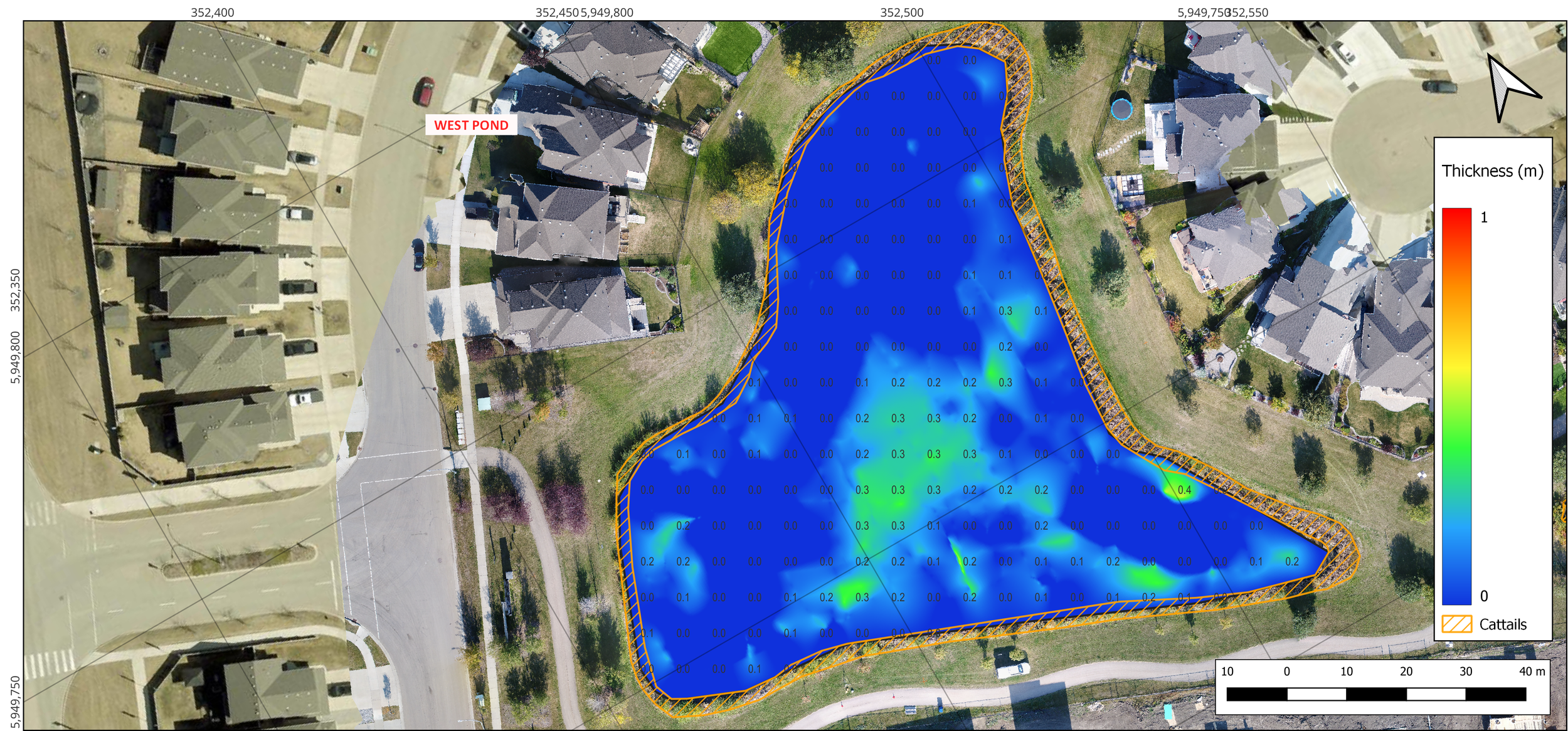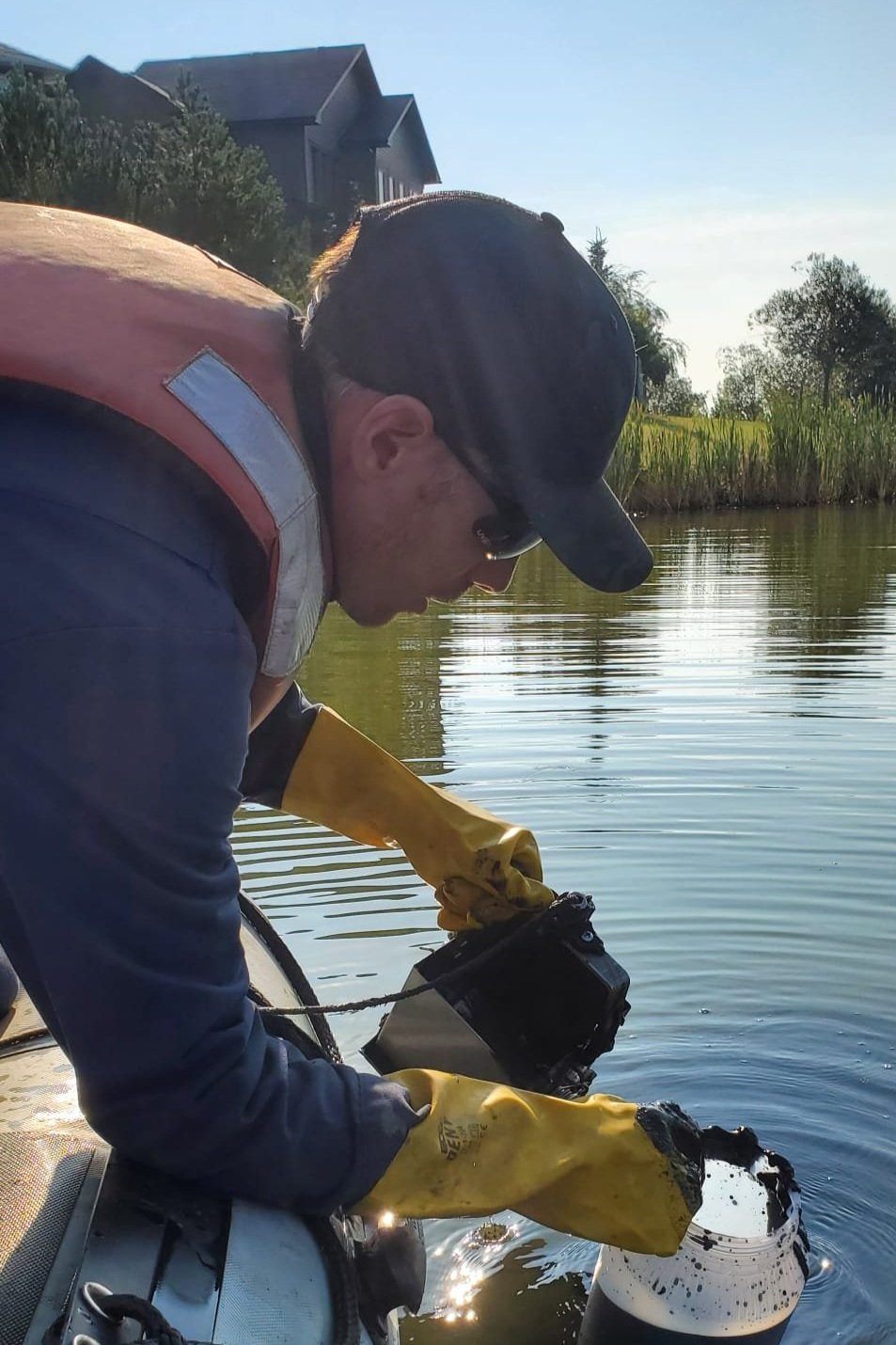Stormwater Retention Ponds: How Sediment Surveys Inform you if it's Time to Dredge
By: Rafael Machado
Introduction
Stormwater ponds are an essential component of the urban landscape. They are used to collect rainwater and runoff from paved surfaces, which would otherwise cause flooding. These ponds accumulate sediment overtime, which reduces their capacity to hold water and prevent floods. If you manage Stormwater Ponds it is important to stay prepared for emergencies and also be prepared to budget and plan for dredging, when required.
Sediment Quantification
To ensure proper functioning of Stormwater Retention Ponds regular monitoring and appropriate action is necessary. One way to monitor the capacity of Stormwater Ponds and determine if dredging is necessary is by completing a sediment survey. If you want to conduct your own basic sediment (sludge) survey you can learn how here. Comprehensive sediment surveys play a crucial role in assessing the need for dredging, they will provide you with hydraulic capacity, sediment volume, dredgeable volume, bone dry tonnes of sediment to be removed and the percent of total cell volume occupied by sediment. This information along with 3D sediment maps will inform you if dredging is necessary or not.
Sediment thickness map in a Stormwater Retention Pond
Environmental Observations
In addition to volume and capacity information, sediment surveys will also provide you an overview of environmental observations and any infrastructure damage visible during the survey. This information will allow you to get prepared for large scale maintenance projects and budget accurately so your ponds remain operational.
A surveyor measuring the water elevation in a Stormwater Retention Pond
Dredging Disposal Options
Sediment samples are also collected to evaluate physical and chemical parameters, including the presence of certain chemical compounds in the sediment, providing useful information for sediment disposal alternatives in case of dredging.
Sampling sediment for dredging disposal options during a sediment survey
Pond Condition
The results of a sediment survey can provide valuable information about the condition of a stormwater pond. If the survey shows that the sediment layer is nearing the pond's capacity, it may be time to consider dredging the pond. Dredging increases the pond's capacity to hold water, reducing the risk of flooding and erosion. It also improves water quality by removing pollutants accumulated in the sediment layer. Dredging can also improve the overall appearance of the pond, making it more aesthetically pleasing to the surrounding community and reducing potential odour issues.
An autonomous survey vessel measuring sediment in a Stormwater Retention Pond
In conclusion, Stormwater ponds are critical for urban stormwater management, but sediment accumulation overtime can reduce their capacity and effectiveness. Regular monitoring of sediment levels through sediment surveys can help determine the need for dredging, which can restore the pond's capacity, improve water quality, and reduce the risk of flooding.
Sediment Thickness Map from a Stormwater Retention Pond Sediment Survey
Contact Hydrasurvey if you have any questions regarding your Stormwater Retention Pond’s capacity or condition





